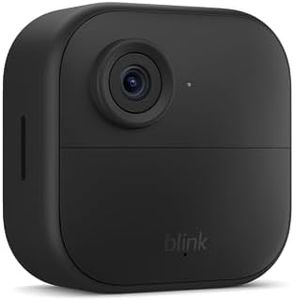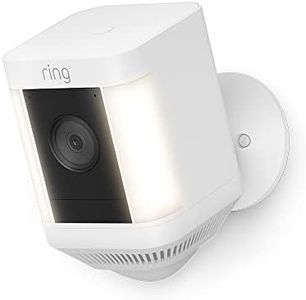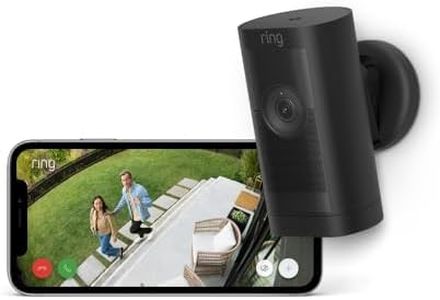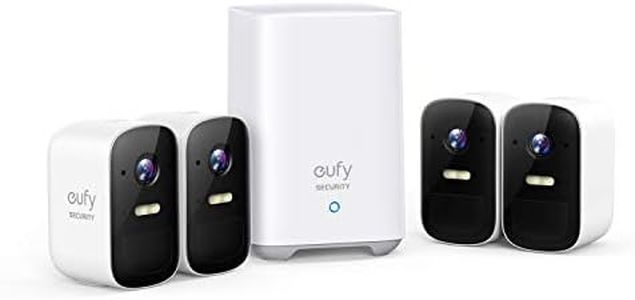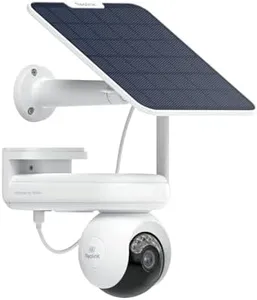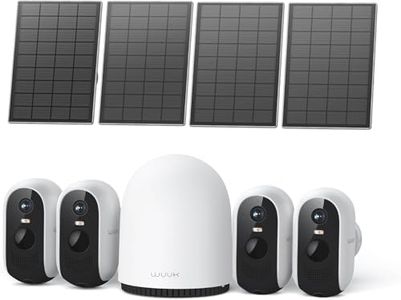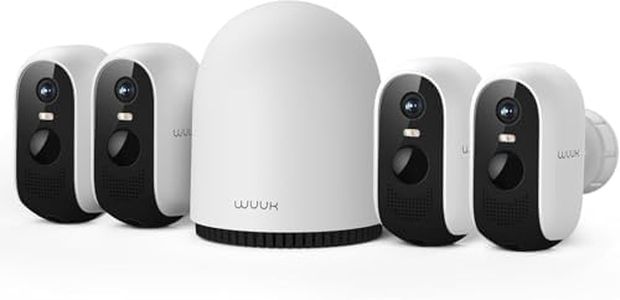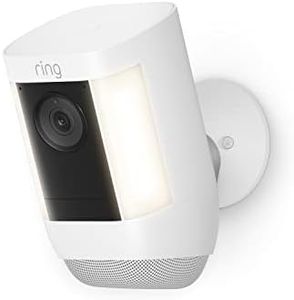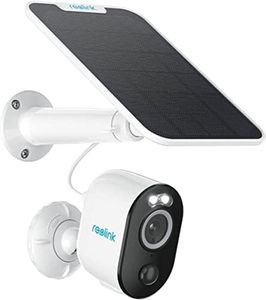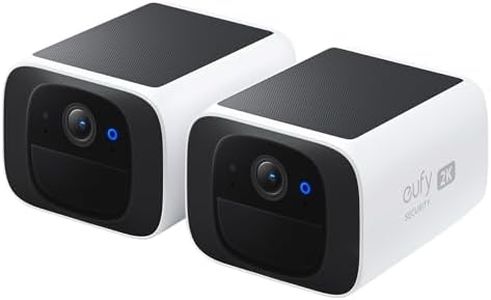We Use CookiesWe use cookies to enhance the security, performance,
functionality and for analytical and promotional activities. By continuing to browse this site you
are agreeing to our privacy policy
10 Best Wireless Security Cameras
From leading brands and best sellers available on the web.Buying Guide for the Best Wireless Security Cameras
Selecting a wireless security camera is all about matching your surveillance needs to the features that different devices offer. Consider where you want to install the camera (indoors or outdoors), what level of detail you need, and how you'll interact with the footage. Think about your lifestyle, such as whether you want to receive alerts when motion is detected or watch live footage remotely. The best way to choose is to balance your requirements for easy installation, video quality, and smart features so your home or business stays secure and convenient.ResolutionResolution tells you how clear and detailed the video from your camera will be. Higher resolution cameras capture sharper images, making it easier to recognize faces, license plates, or other important details. Most cameras range from 720p (HD) and 1080p (Full HD) to 2K or even 4K. For basic monitoring of an entryway, 720p or 1080p may be enough; if you need to cover larger areas or want the ability to zoom in on details, go for higher resolutions like 2K or 4K.
Field of ViewThis spec describes how wide an area the camera can capture at once, measured in degrees. A narrow field of view (under 90º) focuses more closely on a specific spot, which is useful for doorways. A moderate field (90º–120º) suits single rooms or small yards, while a wide field of view (over 120º) lets you see more of a large area, such as entire backyards or parking lots. Choose based on how much area you want to monitor without needing multiple cameras.
Night VisionNight vision enables your camera to see clearly in low light or complete darkness. This feature is essential if you want round-the-clock security. Different cameras use infrared LEDs or advanced low-light sensors. Look at both the type (black-and-white vs. color night vision) and the maximum range (how many feet/meters the camera can see at night), and select based on how dark your monitored area gets and how far you want to see.
Power SourceWireless cameras can be powered by batteries, plugged into a wall, or even use solar panels. Battery-powered models are easiest to install and move but require occasional recharging or new batteries. Plug-in cameras don’t need regular maintenance but must be near an outlet. Solar options are good for hard-to-reach areas. Consider where you’ll place the camera and whether you prefer to avoid dealing with cables or ongoing battery maintenance.
Storage OptionsCameras record footage that can be saved locally (on a memory card) or in the cloud (over the internet). Local storage offers privacy and no ongoing costs but limited space. Cloud storage provides access to footage from anywhere and often longer history but may require a subscription. Decide based on whether you want easy remote access or prioritize privacy and control over your footage.
Smart FeaturesMany wireless security cameras come with features like motion detection, person detection, and the ability to send alerts to your phone. Some also integrate with smart home devices or allow two-way audio communication. Simple motion alerts are good for basic setups, but if you want fewer false alarms and more detail, look for advanced detection or smart home integration. Choose based on how hands-on you want to be with alerts and remote access.
Weather ResistanceIf you plan to use your camera outdoors, weather resistance is key. Cameras are rated by standards like IP65, IP66, or IP67, which indicate protection from dust and water. Higher numbers offer more protection against harsh conditions. For indoor use, this is less important. Pick a camera with the right rating based on whether you’ll expose it to rain, snow, or dust.
